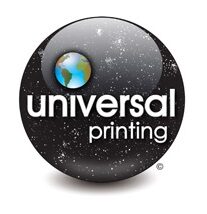COLOR PRINTING: For those who aren’t trained in printing or graphic design, it can all get very confusing. Most people who are taking the “Do It Yourself” approach to setting up files just look at colors on the computer screen, with maybe a handful that have access to a Pantone guide, but not really understanding it. If you’re not familiar with how ink works and how colors are made, you could end up with some very UNEXPECTED results. This is the first of a series of blog posts that will hopefully help make sense of color, and how color is made in the world of commercial printing.
20 years ago a very wise man named John Warnock came up with a GENUIS idea for a system that would allow files from any computer or application to be viewed or printed on any other computer regardless of whether the other machine had the original software application, fonts, graphics, or anything else. This system which he named Camelot, went on to become the Portable Document File Format released by Adobe in 1993. Since then PDFs have become not only the standard, but in many cases a REQUIREMENT for graphic design and commercial printing professional worldwide.
Here’s another great trick for blending spot colors in Adobe InDesign, as explained by John Francis, Art Director for Universal Printing. If you like this video, feel free to check out our other helpful tutorials.
Universal Printing installed our copies of Adobe Creative Suite 5 three days after the major upgrade release in April 2010. We’ve had a few patches and a few minor program updates to address crashing, some PDF creation issues and general compatability, but all-in-all, it’s a worthwhile, stable upgrade with some nice new features.
John Francis, Art Director for Universal Printing, has created some helpful videos of “tips and tricks” for helping you get noticed and stand out from your competition. Before setting up your files, watch some of our helpful tutorial videos like the one shown below.
